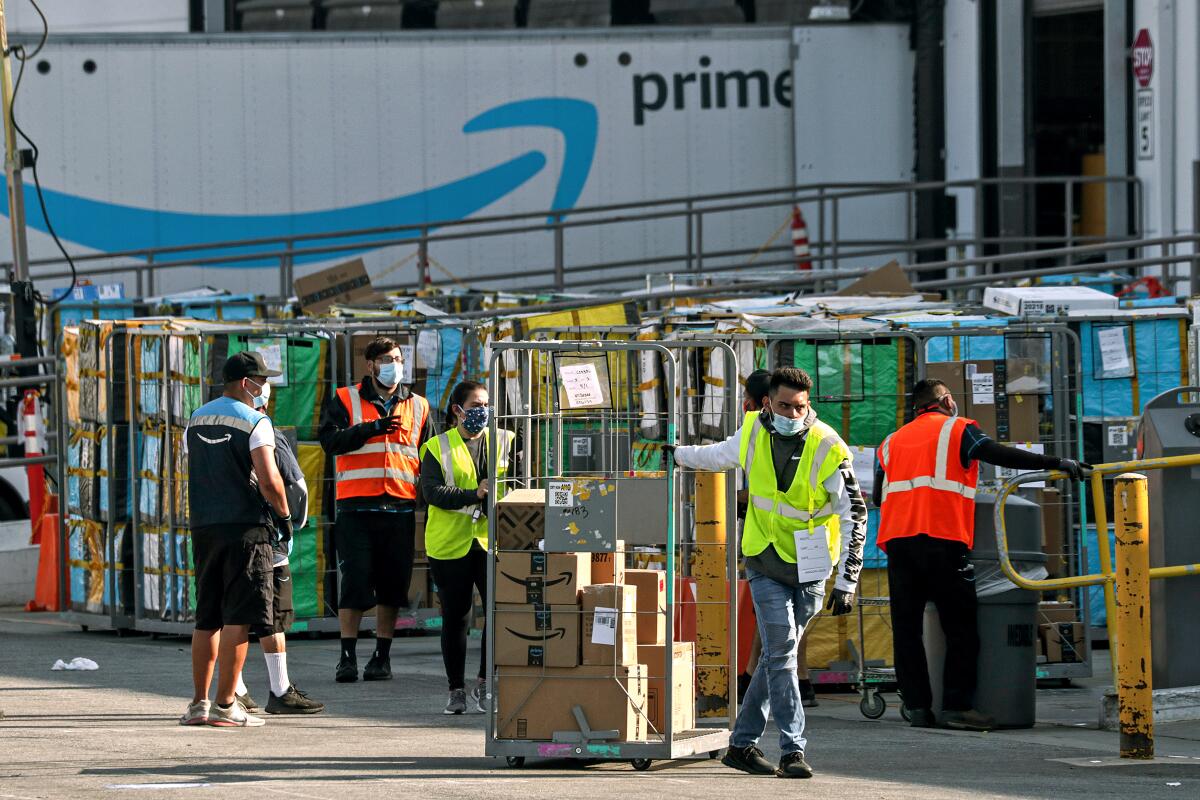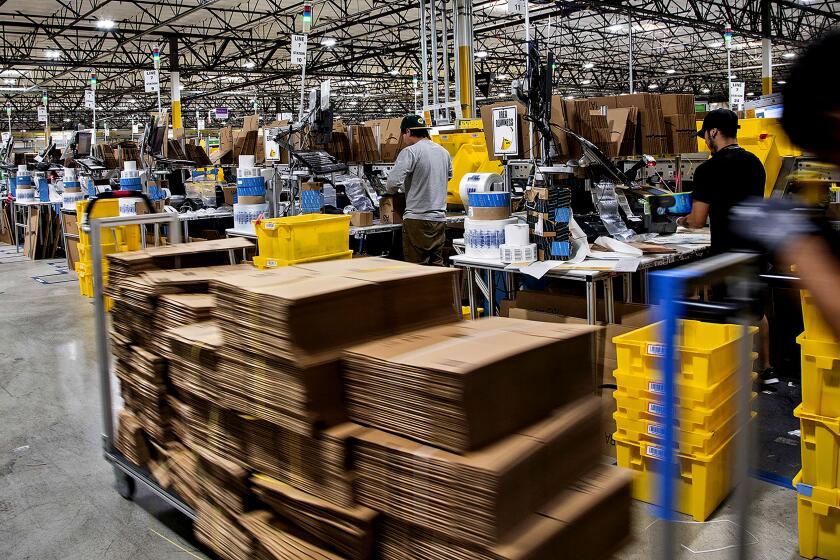A second Prime sale shows Amazon is nervous about the economy too

- Share via
Holiday bargain shopping is starting extra early this year. And that could be good news for shoppers, even if it signals slightly worrisome things for the economy.
E-commerce giant Amazon announced plans Monday for “a new two-day global shopping event” exclusive to members of its Prime loyalty program. Dubbed Prime Early Access Sale, the promotion is similar to Prime Day, the annual sale held in July to generate a bonanza of orders and new subscribers.
Rival retail giants Walmart and Target have already signaled plans to kick off holiday sales earlier than ever, setting the stage for a long holiday shopping season with significant discounts. With warehouses and store shelves suddenly full of inventory after two years of supply chain disruptions, deals will be easier to come by than since the start of the COVID-19 pandemic, say retail experts.
“It is absolutely good news for consumers,” said Mark Mathews, vice president for research, development and industry analysis for the National Retail Federation, a trade group for the nation’s retailers. “Now all of a sudden we are almost back to pre-pandemic times when you have too much of this, too much of that so you have to discount.”
Amazon’s bonus sales event may be a sign that retailers are concerned that Americans will keep a tight grip on their wallets this holiday season because of fears over inflation, rising interest rates and predictions of an oncoming recession.
An Amazon spokesperson said that the company — with annual sales of more than $470 billion last year — added the second online sale to help overcome such worries.
“In light of inflation and economic head winds, we want to help members save throughout the season,” said Amazon spokesperson Deanna Zawilinski.
Amazon’s Early Access Sale runs from Oct. 11 at 12 a.m. PDT through Oct. 12 in 15 countries, including the U.S., Canada, China, France and Germany.
During this month’s historic heat wave, employees at Amazon’s largest West Coast air freight facility were conducting their own workplace temperature checks.
Amazon started Prime Day in 2015 to attract new subscribers, who now pay $139 a year for shipping discounts, video streaming and other perks. But this is the first year that Amazon has added a second deal “holiday” in the same year.
“Amazon is trying to cover its bases and trying to capture the bulk of the holiday spending,” said Venkatesh Shankar, a marketing professor at Texas A&M University.
Target is holding its Deal Days promotion slightly earlier this year, scheduling it for Oct. 6-8 instead of Oct. 10-12 last year. The Minneapolis-based retailer also announced plans to hire 100,000 seasonal workers to prepare for the holiday shopping season.
Walmart recently announced plans to expand its window for returning holiday sales items, scheduled from Oct. 1 to Jan. 31, compared with last year’s return window of Nov. 1 to Jan. 24.
Helping fuel the sales competition is an oversupply of merchandise — including clothes, toys, electronics, furniture and other popular consumer goods — that retailers ordered to meet expected consumer demand but that were delayed for months because of supply chain problems. The items are now taking up valuable space in warehouses and store shelves.
With a recent surge in inflation and rising gasoline prices, Americans haven’t been spending on such items as much as retailers anticipated. Store owners and retail operators now need to move those items off the shelves to make way for new holiday merchandise.
“They have a surplus in inventory because of the supply chain whiplash,” said Anthony Dukes, a professor of marketing at USC’s Marshall School of Business. “This would imply for consumers perhaps lower prices ahead.”
Consumer sentiment has been dropping and retailers know they have to make an extra effort to get Americans to loosen their purse strings, said Mickey Chadha, vice president and senior credit officer at Moody’s.
“The discounting is happening now to take advantage of how highly uncertain [retailers] are about what the environment is going to be,” he said.
Chadha said shoppers should take advantage of early holiday discounts because new supply chain problems or a spike in COVID-19 cases could close stores, lead to empty shelves and put an early end to such deals.
“Consumers should be looking to have a list of what they want and start doing the shopping now while retailers are discounting,” he said.
More to Read
Inside the business of entertainment
The Wide Shot brings you news, analysis and insights on everything from streaming wars to production — and what it all means for the future.
You may occasionally receive promotional content from the Los Angeles Times.












